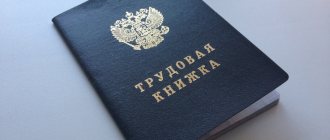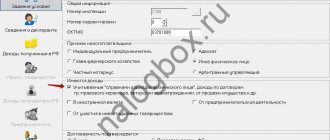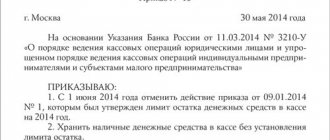The main goal of any state is to ensure control over business in the country, which will help to implement an income accounting book for individual entrepreneurs on a patent 2020, a sample of which every entrepreneur who has chosen this taxation system should know. The decision to adopt this method of accounting is of interest to many, because with its help the amount of contributions to the budget is much less, and there is confidence in the future in the form of medical care and pension insurance. And most importantly, everything is official and there is no need to hide from the inspection authorities.
Is the patent tax system beneficial or not?
The patent taxation system is a simplified way of doing business for an individual entrepreneur. It is an alternative version of paying tax, in which deductions are paid not on the profit received, but on the purchase of a patent. It is purchased for a period that is a multiple of a month, with a maximum validity period of 12 months, and begins on an arbitrary date within the interval of one calendar year.
During the validity period of the PSN, it is impossible to transfer to another taxation system on your own initiative.
The value of a patent depends on the period of validity and is calculated by the inspector using the formula:
Where P is the cost of the patent;
DB – basic profitability, calculated by tax authorities for each region separately. Represents the statistical coefficient of the received data in the direction of the patent for the previous year.
Example: Let’s imagine that the average retail budget in the region was 700 thousand rubles per year.
Then, the patent price is calculated as follows:
P = 700,000 · 0.06 = 42,000 rubles.
That is, the price will be 42,000 rubles per year. If you need to find out the cost of a patent for a certain number of months, then the result must be multiplied by the number of months for which the patent is purchased and divided by 12 (the number of months in a year).
For example, the acquisition period is 8 months, then:
So, in order to purchase a patent for 8 months, you will have to pay 28,000 rubles. But unfortunately, this is not all the costs. Since one entrepreneur may have several patents, this calculation must be made for each one. I would like to note that one individual entrepreneur has the right to simultaneously be on several taxation systems (STS, OSNO, etc.).
The unusual method of toll collection brings both large profits and losses. An entrepreneur cannot accurately predict the development of a business in the near future, the maximum is to analyze the previous period, if any. So, statistical data have shown that trading with a patent is profitable, it’s time to switch to it.
There are some areas of business that prohibit accounting on PSN. You can familiarize yourself with them in the classifier of types of activities (OKVED).
Unfortunately, not only individual entrepreneurs, but also inspection services worry about profit. If it is discovered that the profitability threshold for the year has exceeded 60 million rubles, you will have to say goodbye to this taxation system. This also applies to having a staff of more than 15 people. If an individual entrepreneur has lost the right to use this system, he must report this to the tax office within 10 days.
For PSN, it is sufficient to maintain a book of income records, but if the limits of the permitted requirements have been violated, primary documents for the period of validity of the patent will be needed to pay the tax at the basic rate. When such an event occurs, personal income tax is reduced by the amount spent on acquiring the patent.
The advantage of this accounting system is the following:
- Fixed patent rate does not depend on the entrepreneur’s revenue.
- There are fewer mandatory reports to submit (VAT and personal income tax are not submitted) than with other types of taxation. There is no need to keep a book of expenses and income for an individual entrepreneur on a patent.
- Simplified accounting system.
- Save time.
- Installation of cash register equipment (CCT) is optional.
- There is no need to monitor expenses and their correctness.
If for some reason an entrepreneur has lost the right to use the PSN, or has ceased his commercial activities under a certain patent, then in the future he will be able to return to such a system only in the next calendar year.
Procedure for filling
Business entities using the simplified (patent) taxation system must fill out the following columns, thus:
- the first column will indicate the order number of the financial transaction that is subject to registration;
- the second column will indicate the number and date of the mandatory financial document, which is the basis for the transaction that is subject to recording;
- in the third column, in a mandatory case, a brief content of the financial transaction that is subject to the necessary registration will be described;
- the fourth column will indicate the profit received from carrying out business activities, which is stated in the patent giving the right to such activities.
There is valuable advice on this matter, which is as follows. As stated earlier, the income book for patent activities is used only to record those monetary transactions that take place in the types of activities specified in the patent. No other operations can be indicated in it and this is strictly prohibited. If an entrepreneur conducts part of his activities under a patent, and the other part under the general taxation system, then he will submit two reports, the first for the patent, and the second for another type of activity.
Income book
According to the Tax Code of the Russian Federation, Article 346.53, paragraph one, all individual entrepreneurs located on the PSN are required to keep an income accounting book (IAL) of their profitability. It consists of a strict reporting form in which the entrepreneur enters the profit received in chronological order. Each individual type of activity has its own CUD. The document is prepared in Russian. It is allowed to keep a book in a foreign language, provided that a translation of the text into Russian is located next to it.
Many people confuse the name KUD with KUDiR (book of accounting for income and expenses), although these are two different documents used in different taxation systems. Therefore, you should not look for a KUDiR for an individual entrepreneur on a patent; in the PSN it is more correct to use the KUDiR sample for filling out 2020.
You can keep a book of income accounting for individual entrepreneurs using the patent taxation system both electronically and in paper form. If accounting is kept on a computer, at the end of the reporting period it is printed, laced and numbered.
Varieties of this type of document preparation include:
- special programs (Bukhsoft, etc.);
- sample form in Excel, which can be downloaded on the Internet;
- online services.
If you choose the option of filling it out by hand, then first the KUD is stitched and numbered, and then the data is entered. The book must have a title page. The reporting itself is maintained in a table where the entrepreneur displays the transactions performed as they occur. Similar transactions during the day are combined and written on one line. Everything is filled out with a black or blue ballpoint pen. On the last page of the KUD, the number of sheets in the book is indicated, a seal (if any) and the signature of the individual entrepreneur are affixed.
An income accounting book is compiled for the duration of the patent and a new one is purchased when the next reporting period occurs. At the same time, only one CUD is carried out in one direction of the patent.
There are no ideal documents; if filled out by hand, errors often occur.
Naturally, no one will rewrite the entire book, so if inaccuracies are discovered, you must:
- Check the source documents on the basis of which the adjustment is made. In the future, they will confirm the validity of the operation.
- Cross out incorrect information.
- Write a correction.
- Certify the edits with the individual entrepreneur’s signature and seal.
If there is an error in the electronic version, everything is much simpler; the document is edited and printed again.
The absence of an income accounting book is fraught with a fine for the entrepreneur in the amount of 10,000 to 30,000 rubles, depending on the scope of the violation. Therefore, we will consider the rules for drawing up this document, which consists of a title page and section I income.
KUDiR for individual entrepreneurs on the simplified tax system
The document for the simplified tax system is much simpler, and it is filled out not only by individual entrepreneurs, but also by organizations that use the simplified taxation system.
The book of income and expenses for the simplified tax system 2020 consists of a title page and 4 sections:
- Income and expenses.
- Accounting for the costs of acquiring fixed assets and intangible assets taken into account when determining the tax base.
- Calculation of the amount of loss that reduces the tax base under the simplified tax system.
- Expenses that reduce the amount of the calculated simplified tax system.
The title page indicates: name of the individual entrepreneur, INN, object of taxation, bank account details, tax period, OKPO code.
In section 1, the amounts of income are recorded in chronological order as payments are received from clients.
Sample of filling out KUDiR 2020 “income minus expenses” (hereinafter referred to as “D minus R”):
Title page
All strict reporting forms have their own history and date of approval of the document; in our case, a sample form appeared on December 22, 2012. It was on this day that the Ministry of Finance of the Russian Federation approved the form with which individual entrepreneurs have been working for more than 6 years. As obedient citizens of our country, we are obliged to use only it. Outwardly, it resembles a book of income and expenses for individual entrepreneurs, but when taxing a patent in 2020, they are different.
We can find out whether we have the form we need by looking at the upper right corner of the title page, 135n order, appendix No. 3, will confirm that the chosen form is correct.
So, the form is correct, it’s time to fill it out, for this you will need to enter the following information:
- This year.
- Full name of the individual entrepreneur.
- Entrepreneur's TIN.
- Patent date, in order year, month, day.
- The city in which the patent was issued.
- Patent validity period. In this case, the beginning of its validity must coincide with the date of the patent.
- Individual entrepreneur registration information, including OKATO.
- Unit of measurement in accordance with the all-Russian classifier.
Now let’s look at a sample of filling out the title page of the income book for an individual entrepreneur on a patent.
The cover is completed, let's move on to entering information into the document itself.
Book of accounting of income and expenses for individual entrepreneurs for patent 2020 free download
By using this site, you agree to the use of cookies in accordance with this cookie type notice. The magazine is laced with a special lavsan thread threaded through the holes of the hole punch. Secure with a cardboard insert and a printable sticker.
The income book can be kept both on paper and in electronic form (clause 1.4 of Appendix 4 to Order of the Ministry of Finance of Russia dated October 22, 2012 No. 135n).
What is the preferential length of service for teaching staff? The preferential length of service of teaching staff gives the right to early retirement to those employees of the education system who work with children. Legislation in this area over the past years...
Section 1 Income
The income book for individual entrepreneurs on the patent tax system has not only a title page, but also information about the receipt of income.
This information is recorded in “Section 1. Income” and consists of the following columns:
- The serial number of the operation.
- Date and number of the document according to which cash or non-cash funds were received (number of bank statement, payment order, Z-report).
- Brief content of the name of the document, as a result of which funds were received for the type of activity specified in the patent.
- Amount of income in rubles. If the profit is received in another foreign currency, then its recalculation at the exchange rate of the Central Bank for the current day is recorded in the accounting book. In situations where payment was made using a bill of exchange or other valuable document, its value is entered in the book.
- Total.
Payment documents include:
- Receipt cash order.
- Agreements, if they are the basis for prepayment.
- TTN.
- Receipts confirming payments.
- Receipt payment orders.
- Other financial documents resulting in the receipt of funds from the buyer.
- Advances received. Moreover, if a return occurs in the future, the operation is reversed, which reduces the entrepreneur’s income in the next period.
Despite the variety of possible transactions that relate to the income of an individual entrepreneur, there are also those that should not be included:
- interest accrued by the bank;
- fines, penalties;
- free receipt of material and intellectual values;
- loan interest;
- other income not related to the patent activity of the entrepreneur.
Entering data into the CUD should occur regularly, on the day of the operation.
The shelf life of the income accounting book according to the law of the Russian Federation is 4 years, but based on the order of the Ministry of Culture of Russia No. 585 of August 25, 2010, this document must be stored much longer.
An income accounting book for individual entrepreneurs on a patent 2020, which you will need to download or purchase, is a mandatory form of reporting. For several years, it stores information about the income received under a certain patent, which the tax authorities will request during the first audit. Our goal, as entrepreneurs, is to give them the required document, filled out in accordance with all the rules, and to deprive them of the pleasure of fining yet another taxpayer.
The income book for individual entrepreneurs on a patent is, in principle, a very simple and universal form of accounting. At the same time, this accounting book is a form of reporting for the entrepreneur about his commercial activities. Any business activity must be carried out within the framework of current legislation; all accounting and reporting on commercial activities is also strictly regulated by current laws, regulations and instructions of various government departments.
For entrepreneurs working individually, a simplified taxation system is provided. In addition, to further simplify and facilitate business activities, a separate patent system is provided. It is easier and more convenient to report under the patent system, and a preferential tax regime is specially provided for. Maintaining paper records for such entrepreneurs is kept to a minimum. The tax under the patent system is paid only on the income received, and therefore only income needs to be taken into account; the entrepreneur’s expenses do not need to be taken into account in this simplified system at all. This greatly simplifies the accounting of business activities and facilitates commercial activities in general.
To keep records of the business activities of an entrepreneur using the patent system, a unified income accounting book (KUD) is provided, which reflects all the profitable business operations of the entrepreneur line by line. At its core, this is a standard reporting form that has a title page and a tabular form that contains several columns and the number of rows according to the number of business transactions for the reporting period. Financial transactions of the same type per day can be summarized in one line. The maintenance of this ledger is subject to the usual standard requirements that apply to any other financial reporting. Let's take a closer look at maintaining this accounting book.
Individual entrepreneurs on a patent must take into account their indicators only for the purposes of subsequent taxation, in our case this is income. In this regard, individual entrepreneurs must maintain an income accounting book (IUR) and pay tax on their income. Using a simplified tax payment system, individual entrepreneurs maintain simplified accounting according to the CUD (see Order of the Ministry of Finance No. 135, Tax Code of the Russian Federation, Article 346).
KUD is a kind of set of special registers created specifically for entrepreneurs using the patent system to conduct their business activities.
Entrepreneurial activity is carried out under a patent issued for a strictly defined type of commercial activity for a very specific period. The CUD is opened separately for each patent and all income received under the patent is reflected in the accounting book, the book entries are correlated with the validity period of the patent.
If an individual entrepreneur has one patent per year, then income records are kept in one book. If an individual entrepreneur has acquired two patents, each of which has a validity period of 6 months, then you need to create 2 accounting books for each patent separately.
The CUD has a standardized unified form, which is approved by the Ministry of Finance, and the rules for its maintenance are clearly stated. The standard KUD form contains a title page and one section for reporting income. There is no need to take into account expenses - they do not affect the determination of the tax base.
Contributions to various funds and other expenses of individual entrepreneurs in the patent system are not deducted from the tax amount, and therefore are not taken into account separately.
KUD is a standardized form of reporting for individual entrepreneurs, and therefore it is subject to all requirements established by law for accounting and reporting in the Russian Federation.
Changes in the book of income and expenses from 2020 and applied in 2020
By Order of the Ministry of Finance dated December 7, 2016 No. 227n, changes were made to the usual document. Among the most important innovations are several.
Change 1: There is a new section for trade fee
For now, this fee is valid only in the city of Moscow. Taxpayers who have chosen the simplified taxation system have the right to reduce the amount of the single tax by the amount of trade tax deductions. To do this, a new fifth section is being added to the Book.
All collection payments are reflected in chronological order. It is important to note that until 2020, it was not possible to reflect this fee on the KUDIR form. Accountants had to reduce the amount of the simplified tax by its amount and only then enter information into the Book. In 2020, this is no longer necessary.
Change 2: stamp KUDiR 2019
Starting from April 7, 2020, entrepreneurs who have chosen a simplified taxation system may not certify the Book with a seal if they do not use their own stamp in their work.
The procedure for maintaining CUD for individual entrepreneurs in the patent system
According to the general instructions for maintaining a CUD, it must have the following mandatory details:
- a title page indicating the full name of the business entity, as well as the accounting period;
- the income section, which contains mandatory fields for recording financial transactions (date, name, amount of income, document - basis, etc.);
- on the last sheet of the KUD the total number of pages is indicated.
At the end of the reporting period, the accounting book must be numbered and stitched, on the back of the last sheet it must be sealed with a “sticker sheet” with the signature of the individual entrepreneur. The reporting period is a calendar year.
What is a book of income accounting for individual entrepreneurs under a patent?
Despite the fact that working on a simplified method of paying taxes, which involves obtaining a patent for a certain type of activity, does not represent a complex accounting of income or expenses, it does require maintaining certain documents. The most important of them is a book on accounting for the income of individual entrepreneurs using a patent. The procedure for its circulation and maintenance is provided for in such regulatory legal acts as Order of the Ministry of Finance of our country No. 135 of October 22, 2012, and the Tax Code of our state, namely Art. 346.53 subparagraphs 2 - 5. The latest changes are provided for 2020 - 2020.
According to their provisions, the income book of a sole proprietor must have the following details:
- title page, which indicates its name, as well as the full name of business entities, in our case individual entrepreneurs;
- mandatory fields to be filled in, where the dates of financial transactions, the names of business transactions, and the amount of funds received, confirmed by various financial documents, are entered;
- all sheets of this book must be stitched and numbered;
- on the last sheet, the total number of pages should be indicated, and the thread with which the book is stitched should be sealed with a small piece of paper, where there will be an imprint of the seal, or a signature if there is no seal.
A sample of this document can be viewed and downloaded here.
It is important to remember that this document is maintained by private entrepreneurs who use a patent in their business activities, which is issued for a specific type of activity and is valid for a certain period.
What business operations are not included in the CUD
Accounting for business transactions in the accounting book is carried out for tax purposes; for individual entrepreneurs with a patent, a simplified taxation system applies, which provides for the calculation of taxes based on the income received. And in this regard, expenses mean business operations that do not bring profit to the entrepreneur, such as the purchase of materials, payment for various services, and various costs for the needs of the business of an individual entrepreneur.
Now let’s figure out what profitable business operations need to be entered into the accounting book for individual entrepreneurs in the patent system. Only those profitable monetary transactions that clearly fall within the scope of the activities specified in the patent are entered into the income book for patent activities. No other income transactions of the individual entrepreneur are indicated. If, for example, an entrepreneur has several types of activities, activities under the general taxation regime or activities under another simplified taxation regime, then entries not related to activities under the patent should not be included in the CUD for the patent.
General requirements of KUDiR for all tax regimes
Every year a new document is opened.
At the end of the year, it is printed, stapled, the pages are numbered, the total number of pages is certified by the signature of the individual entrepreneur.
All information is recorded in chronological order based on primary documents and only after payment (cash method).
For transactions with settlements through a cash register, it is allowed to fill out the Book at the end of the working day using the Z-report.
KUDiR and primary documents on the basis of which records are made must be stored for 4 years.
If there is no activity, a “zero” KUDiR is printed and stitched.
Fill out and print the Income Accounting Book in the LS program · Income and Expense Book
| in Word format, rtf in Excel format, xls in Adobe Acrobat format, pdf |
What is documentary evidence for income accounting purposes?
The accounting book must include profitable business operations that bring profit to the entrepreneur and they must be confirmed by the following documents:
- Receipt cash orders, if the entrepreneur maintains cash records;
- Agreements under which cash advances were received as prepayment;
- Receipt invoices;
- Receipt payment orders and checks confirming the receipt of money to the individual entrepreneur's accounts;
- Financial documents of strict reporting on the receipt of funds to the individual entrepreneur.
- Other documents confirming income to the individual entrepreneur.
Separately, it is necessary to note advances, since when accounting for them, there may be some subtleties that you need to know. If in one period an advance was received, and accordingly it was taken into account in the income of the individual entrepreneur, and in the next period the advance had to be returned for some reason, then in the next period it is recorded in the CUD as the amount of profit with a minus. That is, this is actually an expense account that reduces the tax base of the next reporting period. Thus, the tax paid for the next reporting period will be reduced due to the returned advance.
Composition of the income book under the patent taxation system
According to Order No. 135n in 2020, the form of the income accounting book for individual entrepreneurs on a patent consists of section I, which includes 4 lines where the following are written:
- On pages 1-3 - mandatory details of primary financial documentation confirming the fact of a business transaction. This is, first of all, the date and number of cash orders, checks, payment requests and orders, account statements, invoices, BSO, contracts, etc. Page 1 indicates the number in order, page 2 – date/number of the document, page 3 – contents of the operation.
- Page 4 reflects the amount of income from the transaction in relation to the activity for which the patent is applied.
Important! If an entrepreneur applies two tax regimes - for example, the simplified tax system and the PSN, it is necessary to keep two different books to separate the accounting of business transactions. In this case, compiling one register is not allowed.
Filling out the title page of the KUD
The title page must be filled out on a standard form in full accordance with the footnotes. The following information is required:
- For what reporting period are records kept in the accounting book (for example, for 2020);
- Start date of maintaining the CUD;
- Full name of the entrepreneur;
- TIN of the entrepreneur;
- Full name of the subject of the Russian Federation that issued the patent to the entrepreneur;
- Specify the specific validity period of the patent, in the format “day.month.year”;
- The entrepreneur's place of residence;
- Bank details of the individual entrepreneur - current account number and name of the credit institution.
Filling out the income section, the tabular part of the CUD
Individual entrepreneurs who are on the simplified patent taxation system fill out the following columns of the income accounting table, thus:
- the first column of the accounting table indicates the serial number of the business operation that is subject to accounting in the CUD;
- the second column of the accounting table indicates the number and date of the primary document, which will serve as the basis and confirmation of the completed business transaction;
- in the third column of the accounting table, the content of the business operation, which is subject to accounting in the CUD, is briefly described;
- the fourth column of the accounting table indicates income in rubles from the entrepreneurial economic activity of the individual entrepreneur, which clearly corresponds to the issued patent giving the right to such commercial activity.
Amounts of income in KUD are displayed only in whole rubles, without kopecks.
How to reflect income transactions based on how the income was received:
- When income is received in the current account of an individual entrepreneur, in the corresponding column of the accounting table we write the document basis payment order No. and the date of the document, if there were several payments for that day, then you can indicate as a document - the basis a bank statement for that day, also indicating its number and date;
- If the income was received through the cash register in cash, then you must indicate the date and number of the cash Z-report;
- If the income was received in cash but not through a cash register, then you need to draw up a receipt order - a standard PKO, indicating its date and number in the accounting book. If customers are issued sales receipts or other standard BSO, a receipt must also be issued for them.
The CUD can have as many lines as desired; the number of lines is equal to the number of business operations during the reporting period, which is limited by the validity period of the patent and the calendar year. At the end of the reporting period, the results need to be summed up in the reporting book. The book is then printed and stapled.
Procedure
Despite the fact that the above income book for individual entrepreneurs who operate on a patent tax system has mandatory fields and columns to fill out, it can be maintained in two ways:
- on paper sheets, in the form of a stitched and numbered book;
- electronic.
In the first case, income accounting is recorded in the designated columns, and after the end of the tax period, or the term of the patent, individual entrepreneurs must take it to the tax office at the place of registration of the individual entrepreneur to check the correctness of maintaining and paying taxes.
In the second case (electronic version), special files are created on the computer, which contain the necessary columns and columns where the individual entrepreneur enters income from his activities. When, again, the tax period ends, or the validity period of the patent, the business entity must print out the electronic version on paper, after which all sheets are bound, properly executed, and submitted to the tax office for verification.
It should also be noted that all individual entrepreneur records must be kept in Russian. If the activity involves working with foreign business entities, or supporting documents were written in a language used by residents of different subjects of the Federation, then they must be translated into Russian. Usually the translation is written in the next column, after the document or entry in another language. The translation must be signed by the entrepreneur and stamped with a date. If the latter is not available, then a signature is sufficient.
Here you can familiarize yourself with such a book in electronic form, and immediately create your own electronic version, which can then be easily printed.
It is important to know that all transactions that are subject to accounting must be recorded in chronological order. At the same time, filling out such a book must be clear and without corrections. If any errors are made that need to be corrected, this is done carefully, after which the reason and confirmation that the accounting was done incorrectly is indicated in the column opposite the correction. This fact must be confirmed by a relevant financial document, with the signature of the entrepreneur, as well as a stamp. If it is not there and never was, it is enough to put a signature on it.
Responsibility for incorrect conduct of CUD
Russian legislation provides for liability for incorrect reporting or failure to provide reporting by business entities.
If supervisory authorities identify any violations in the activities of an entrepreneur related to incorrect or incomplete accounting of his commercial activities, then you can receive a fine of 10 thousand rubles per violation, and if repeated violations are detected, the fine may already amount to 30 thousand rubles This also applies to those who do not keep records of their business activities at all.
It follows from this that all commercial activities of business entities, including those under patents, are strictly controlled by law, and if you violate the current norms and rules, you can run into fines. Therefore, you need to be careful and responsible when filling out the CUD. To correctly fill out reports, you need to familiarize yourself with the rules and samples for filling out the CUD.
Income book of individual entrepreneurs on a patent - maintenance procedure
In the income book, in chronological order, on the basis of primary documents (receipt cash orders, strict reporting forms, cash receipts), all income-generating actions of the entrepreneur are recorded. There is no accounting of expenses under the patent system, therefore, there is no point in collecting documents on expenses.
Despite the fact that with PSN the amount of income does not affect the cost of the patent, it is nevertheless necessary to preserve all primary documents. With PSN, the maximum allowable amount of annual income is established, and if it is exceeded, the individual entrepreneur loses the right to apply the patent taxation system. In 2020, the annual income limit is 60,000,000 rubles.
If the income limit during a calendar year is exceeded, the individual entrepreneur loses the right to apply PSN. After such a case occurs, the individual entrepreneur will have to work on the simplified tax system or OSNO. It will be possible to return to the patent system only in the next calendar year.
The income accounting book for a patent can be kept either in paper or electronic form. If you keep this book in electronic form, then after the end of the tax period, after the expiration of the patent, it must be printed, stitched, numbered and sealed, and if there is no seal, with the signature of the entrepreneur.
Data on the number of sheets in the book is recorded on its last page.
The order approving the procedure for maintaining the book allows for the correction of mistakes. It must be motivated, supported by documents and confirmed by the signature of the entrepreneur indicating the date of correction. If the entrepreneur has a seal, it is necessary to put a seal in the place where the error was corrected.
The procedure for determining and recognizing income during the validity of a patent is established by the Tax Code of the Russian Federation, namely Article 346.53 paragraphs. 2–5.
There is no need to take into account in the book income received from types of business, the taxation of which is carried out in accordance with other regimes.
Let's look at what KUDiR provides on PSN in 2020. According to Appendix 4 of Order No. 135n of the Ministry of Finance of Russia dated October 22, 2012, Section I of the book includes four columns.
Columns 1–3 record the details of the primary documents (date, number) confirming the completion of the business transaction, and the content of the transaction itself.
Column 4 records the amount of income received from the type of activity specified in the patent. At the same time, other income received from activities that do not fall under the PSN are not included here. When combining PSN and simplified tax system, it is necessary to maintain separate records, and, consequently, separate KUDiR.
For each new term for which a patent is received, a new Accounting Book is opened (clause 1.4 of Appendix 4 to Order of the Ministry of Finance of Russia dated October 22, 2012 No. 135n). If an individual entrepreneur applies several patents, then a separate KUDiR is maintained for work on each of them.
There is no need to register the income book of individual entrepreneurs using the patent tax system with the tax office.
Rules for reflecting income and expenses in KUDiR under the simplified tax system
In KUDiR you need to record only those incomes and expenses that are taken into account when calculating the simplified tax system. Moreover, expenses need to be included in the book only if you are using the simplified tax system “Income minus expenses.” And on the simplified tax system “Income” it is enough to reflect in the book the income and insurance premiums paid for individual entrepreneurs and employees.
You need to take into account income from the sale of goods, work or services, as well as some non-operating income. Make an appointment with KUDiR on the day you receive payment from the client. In a special article you will find details about accounting for income in the simplified tax system.
Expenses are more difficult. Firstly, only expenses from Section 346.16 of the Tax Code can be taken into account. Secondly, this must be done on the last date:
- date of full payment to the counterparty;
- date of receipt of paid goods, works or services from the counterparty;
- the date of transfer of the goods to the final buyer (if you are buying the goods for subsequent resale).
A separate article describes the nuances of accounting for expenses in the simplified tax system.
Each entry in KUDiR is confirmed by primary documents. These can be payment orders, strict reporting forms, sales or cash receipts, acts, invoices and others.
Book of accounting of income and expenses for the simplified tax system
News KUDiR in Elbe
With Elba, keeping a book of income and expenses will not be difficult! We will automatically fill in the required fields and help you save the KUDiR in Word or PDF format!










